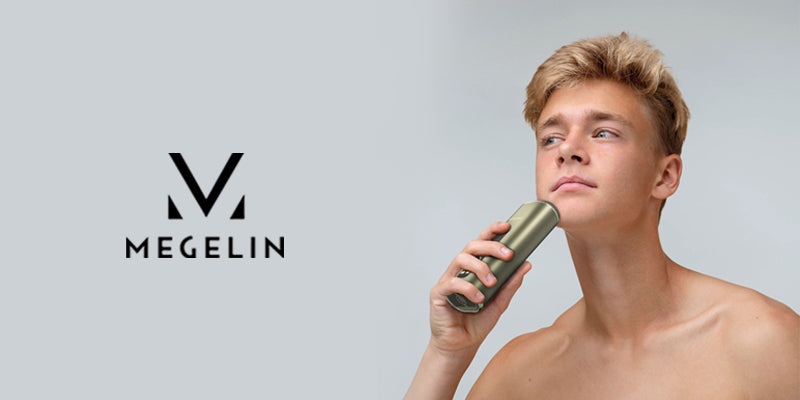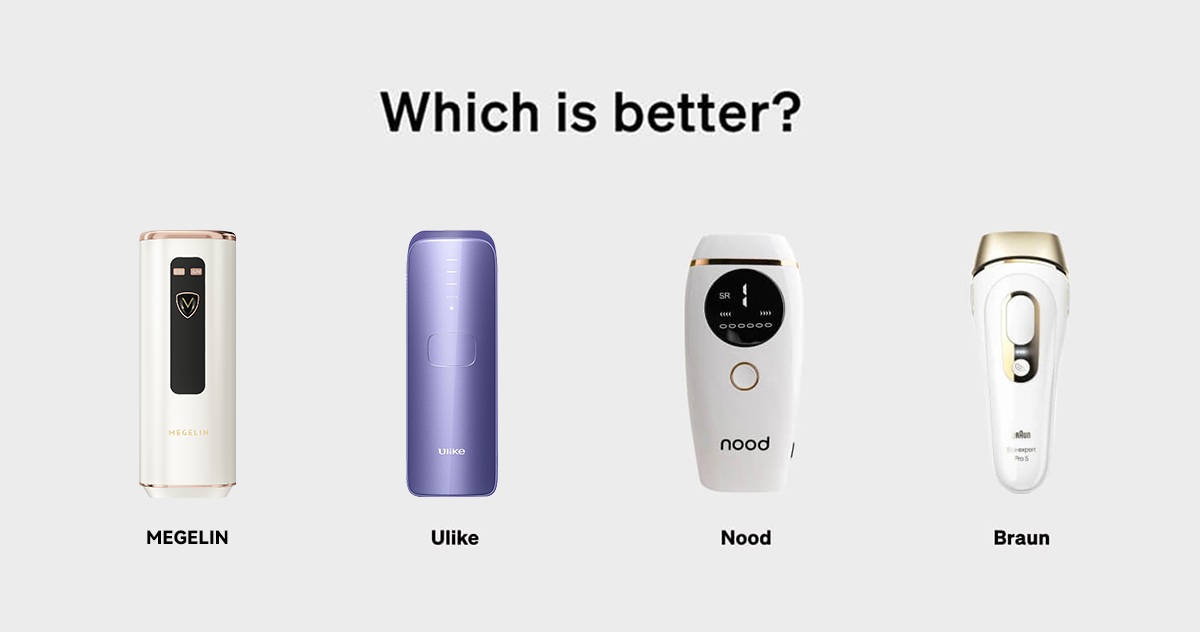
How to Fix a Cracked Tooth Naturally: The Red Light Approach
2MegelinCracked teeth can be a painful and concerning issue for many people. While traditional dental treatments are often effective, some individuals seek natural alternatives to fix a cracked tooth at home. One innovative approach gaining attention is the use of red light therapy for oral health. This method offers a non-invasive way to potentially promote natural healing and provide pain relief for those dealing with tooth decay or damage.
Red light therapy for teeth has shown promise in supporting oral wound healing and improving overall dental health. This article will explore how to fix a cracked tooth naturally using red light therapy, discussing its potential benefits and application methods. Readers will gain insights into the science behind this technique, learn how to use red light therapy for teeth, and understand its possible effects on gum health. By the end, they'll have a comprehensive understanding of this alternative approach to fixing a cracked tooth and its place in natural oral care.
Understanding Cracked Teeth
Cracked teeth are a common dental problem that can occur for various reasons, from dental trauma to chronic teeth grinding [1]. Understanding the types, causes, and symptoms of cracked teeth is crucial for proper diagnosis and treatment.
Types of tooth cracks
There are several types of tooth cracks, each with different characteristics and implications:
- Craze lines: These are micro-fractures confined to the tooth enamel, often appearing as vertical striations [2]. They are typically harmless and don't cause symptoms [3].
- Fractured cusps: These occur when a crack forms around a dental filling, usually not causing much pain [4]. They often affect the lingual cusps of lower molars or buccal cusps of upper molars [2].
- Cracked tooth: This involves a vertical crack running from the biting surface towards the root [4]. It may extend into the gum line and root, potentially irritating the pulp [5].
- Split tooth: This is the result of an untreated cracked tooth, where the crack splits the tooth into two parts [5] [4].
- Vertical root fracture: This type of crack starts below the gum line and moves upward [4]. It may not cause symptoms unless an infection develops [4].
Causes of cracked teeth
Several factors can lead to cracked teeth:
- Age: People over 50 are more likely to experience tooth cracks due to natural wear [4].
- Biting hard foods: Consuming items like ice, hard candy, or popcorn kernels can crack teeth [4] [6].
- Dental treatments: Large fillings or root canals can weaken teeth, increasing the risk of cracks [4].
- Bruxism (teeth grinding): This habit, often occurring during sleep, can cause stress fractures in teeth over time [4] [6].
- Dental trauma: Accidents, falls, or sports injuries can result in cracked teeth [4] [6].
Symptoms of a cracked tooth
Identifying a cracked tooth can be challenging, but certain symptoms may indicate its presence:
- Intermittent pain: A cracked tooth often causes pain that comes and goes, especially when chewing [1].
- Sensitivity: Extreme sensitivity to temperature changes or sweet foods may suggest a crack [4] [1].
- Swelling: The gum tissue around a cracked tooth may become swollen and tender [1] [4].
- Unexplained pain: Difficulty in pinpointing the source of pain in the mouth could indicate a cracked tooth [1].
Understanding these aspects of cracked teeth can help individuals recognize potential issues and seek timely dental care.
The Science Behind Red Light Therapy
How red light therapy works
Red light therapy, also known as photobiomodulation or low-level light therapy, uses concentrated wavelengths of red and near-infrared light to penetrate the skin and tissues [7]. These wavelengths typically range from 630 to 940 nm [8]. When cells absorb this light, it stimulates the mitochondria, leading to increased production of ATP (adenosine triphosphate), the body's energy currency [8]. This boost in cellular energy enhances cell function and promotes rejuvenation.
The therapy also modulates reactive oxygen species, contributing to DNA repair and antioxidation effects [8]. Additionally, it causes the release of nitric oxide, a vasodilator that improves blood flow and supports tissue repair [8].
Benefits for oral health
Red light therapy has several benefits for oral health:
- Accelerated healing: It stimulates cellular repair mechanisms, enhancing the healing process after dental procedures [9].
- Reduced inflammation: The therapy's anti-inflammatory properties help alleviate gum swelling and discomfort [7] [9].
- Pain relief: It provides natural pain relief for conditions such as temporomandibular joint (TMJ) disorders and oral sores [7] [9].
- Improved gum health: Regular treatments can potentially reverse the effects of gingivitis and periodontitis [7] [10].
- Antibacterial properties: Red light therapy has been shown to have antibacterial effects, supporting oral health [10].
Research on red light for tooth repair
Studies have demonstrated the potential of red light therapy in tooth repair and oral health:
- A 2022 study published in Nature revealed that near-infrared light can promote bone regeneration, which has implications for dental health [10].
- Research has shown that red light therapy can treat periodontal disease by decreasing tissue degradation, killing harmful bacteria, and boosting collagen production [10].
- A study involving 90 patients with chronic periodontitis found significant improvements in gum bleeding and bad breath after red light therapy treatment [10].
- Another study explored the optimal wavelengths for treating periodontal disease, finding that both 635nm red light and 808nm near-infrared light reduced inflammation and decreased cell death in gum tissue [10].
These findings suggest that red light therapy has significant potential in promoting oral health and supporting tooth repair processes.
Applying Red Light Therapy for Cracked Teeth
Red light therapy, also known as photobiomodulation or low-level light therapy, has shown promise in promoting oral health and potentially aiding in the natural healing of cracked teeth. This non-invasive treatment uses concentrated wavelengths of red and near-infrared light to stimulate cellular repair and regeneration [11].
Recommended devices
Several devices are available for applying red light therapy to cracked teeth:
- LED mouth trays: These devices deliver red and near-infrared light directly to the oral cavity, targeting the teeth and gums [12].
- Handheld devices: Some products combine red and blue light for a range of oral health benefits [13].
- Professional-grade panels: While more expensive, these offer higher power output and can be used for full-body treatments in addition to oral care [14].
Treatment protocol
To apply red light therapy for cracked teeth:
- Choose a device with wavelengths between 630-940 nm, which are most effective for oral health [8].
- Use the device for 10-20 minutes per session, typically once or twice daily [11].
- Place the device close to or directly against the affected area for optimal light penetration [12].
- Maintain consistency in treatments for best results, as healing may take several weeks or months [11].
Combining with other natural remedies
While red light therapy can be effective on its own, combining it with other natural remedies may enhance its benefits:
- Proper oral hygiene: Maintain regular brushing and flossing to support overall oral health [11].
- Dietary changes: Consume foods rich in calcium and vitamin D to support tooth and bone health [11].
- Stress reduction: Practice stress management techniques to reduce teeth grinding, which can exacerbate cracks [11].
By incorporating red light therapy into a comprehensive oral care routine, individuals may experience improved healing and reduced discomfort associated with cracked teeth.
Conclusion
Red light therapy presents a promising natural approach to address cracked teeth and enhance overall oral health. Its ability to boost cellular energy, reduce inflammation, and promote tissue repair offers a non-invasive alternative for those seeking to fix dental issues at home. This method, combined with proper oral hygiene and dietary choices, could revolutionize the way we think about oral care and tooth repair.
As research continues to shed light on the benefits of red light therapy for dental health, it's crucial to remember that severe tooth damage still requires professional dental care. However, for minor cracks and general oral health maintenance, red light therapy provides an accessible and potentially effective option. By harnessing the power of specific light wavelengths, individuals may find a new ally in their quest to maintain healthy teeth and gums naturally.
FAQs
Can red light therapy aid in dental healing?
When red light is applied, the cells within the oral mucosa and gums absorb photons, which leads to increased production of cellular energy. This surge in energy promotes the activation of cellular repair mechanisms, which can aid in healing after dental procedures like extractions, surgeries, or treatments for gum disease.
What are some natural remedies to help heal a cracked tooth?
Several natural methods can aid in the healing of a cracked tooth, including:
- Saltwater Rinse: A simple and effective way to clean the mouth and promote healing.
- Clove Oil: Known for its pain-relieving properties.
- Turmeric Paste: Has anti-inflammatory benefits.
- Green Tea: Contains antioxidants that support oral health.
- Aloe Vera Gel: Soothes and heals gum tissues.
- Oil Pulling: Helps in detoxifying and protecting the oral cavity.
How can you manage a cracked tooth temporarily without a dentist?
To temporarily manage a cracked tooth until you can see a dentist, consider the following methods:
- Dental Wax: Useful for covering sharp edges of a cracked tooth to prevent further damage to your mouth.
- Temporary Dental Cement: Can be applied to protect the tooth and reduce discomfort.
- Saltwater Rinse: Helps keep the area clean and reduces the risk of infection.
- Soft Foods: Eating soft foods can prevent additional stress on the cracked tooth.
How can you seal a cracked tooth at home?
For minor chips or cracks, dental wax can be applied directly to the edge of the tooth. This helps to cover any sharp edges and prevents them from causing injury to the mouth's soft tissues.
References
[1] - https://www.eagleendodontics.com/5-signs-you-cracked-a-tooth/
[2] - https://www.speareducation.com/2017/08/how-to-recognize-the-5-types-of-tooth-cracks
[3] - https://whitehorsedental.com.au/fix-teeth-breaking/
[4] - https://my.clevelandclinic.org/health/diseases/21628-fractured-tooth-cracked-tooth
[5] - https://www.dentistryiq.com/personal-wellness/article/14201954/cracked-tooth-types-causes-and-treatments
[6] - https://www.deltadental.com/us/en/protect-my-smile/oral-health-conditions/cracked-tooth/common-causes.html
[7] - https://www.yanidmd.com/holistic-services/red-light-therapy-oral-health/
[8] - https://www.perioimplantadvisory.com/clinical-tips/article/14296197/red-light-therapy-a-comprehensive-overview-for-dental-professionals
[9] - https://stsmiles.com/blog/red-light-therapy/
[10] - https://platinumtherapylights.com/blogs/news/can-red-light-therapy-regrow-gums
[11] - https://www.primallifeorganics.com/blogs/primal-life-organics-blog/how-red-light-therapy-helps-to-heal-teeth-and-gums?srsltid=AfmBOoorkg1L-3leqL75P9kOhAs-ziERqErKh9ZL9SI9PNFdKnytHvK_
[12] - https://www.amazon.com/TALS-Immediate-Sensitivity-Promotes-Inflammation/dp/B07GTDPRJC
[13] - https://ledtechnologies.com/collections/dpl-pain-relief-recovery/oral-care/
[14] - https://rouge.care/blogs/rouge-red-light-therapy-blog/red-light-therapy-for-teeth-and-gums-your-key-to-better-oral-health









